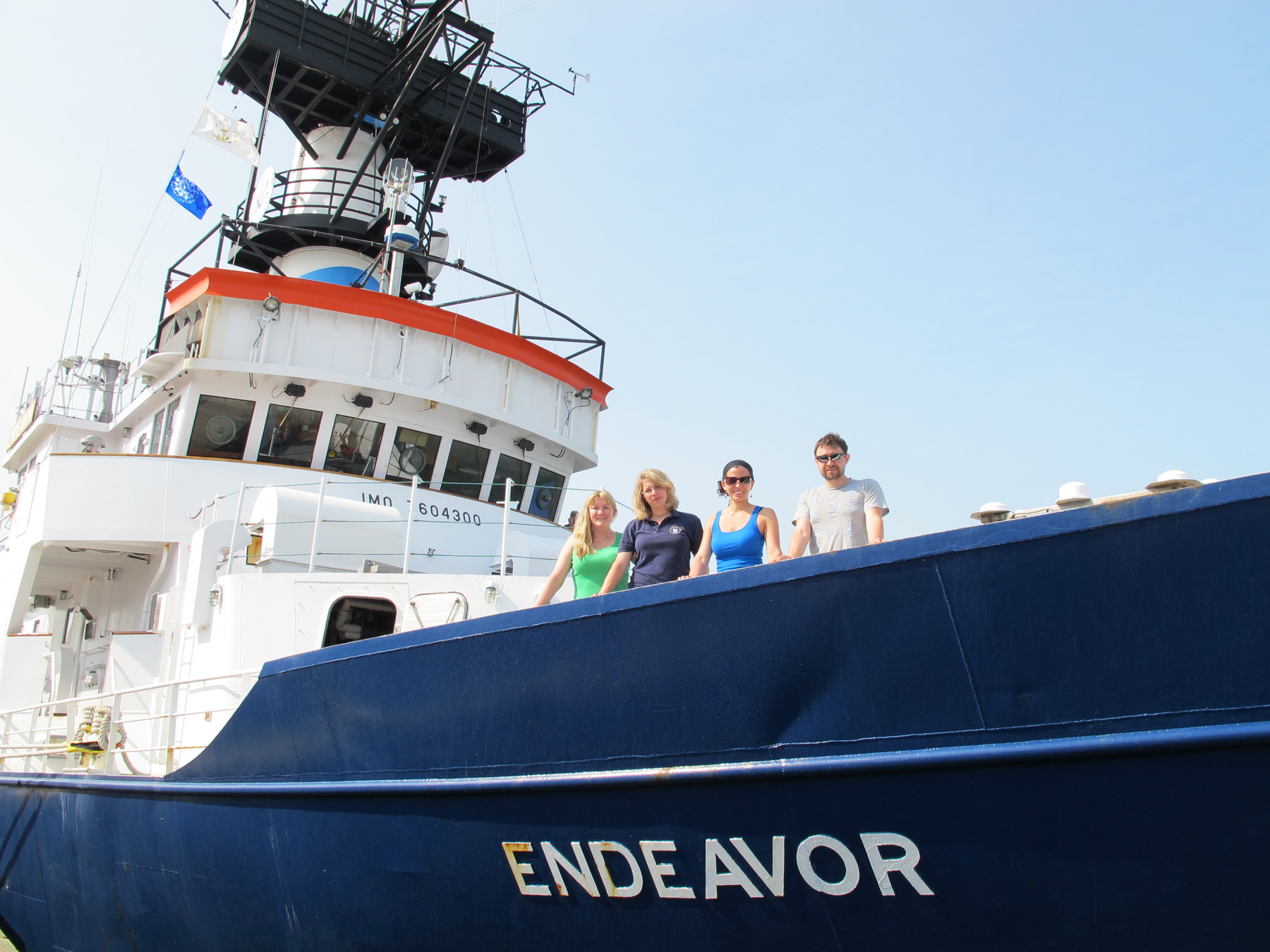Our new Gulf of Mexico research project—“ECological Impacts of Oil and Gas Inputs to the Gulf”—will involve at lot of time at sea over the next few years. The project had its first cruise on board the R/V Endeavor in April 2012 and successfully deployed two instrumented landers for long-term monitoring of seafloor-water column chemical exchange. Johanna Schweers represented the Joye group on the cruise. She collected sediment and water column samples for various biogeochemical measurements as well as experiments to be conducted back in Athens.
When late May rolled around, four members of the Joye group—Dr. Melitza Crespo-Medina and graduate students Joy Battles, Virginia Fleer, Johanna Schweers, and Ryan Sibert—packed up a rental truck of supplies and sampling gear and headed back to Gulfport to board the R/V Endeavor for another six weeks of sampling at various sites in the Gulf of Mexico.
On this cruise, the Joye group is measuring rates of water column and benthic methane oxidation and benthic sulfate reduction; quantifying the abundance and diversity of microorganisms; measuring bacterial production; and, doing a lot of general geochemical characterization of water, sediment solid phase, and sediment pore water samples.
We’ll be visiting sites that have become familiar to us over the past few years—Oceanus 26, GC600, MC118, and AT357—as well as some new core ECOGIG project sites in the Viosca Knoll region. We will continue our time-series monitoring of seafloor biogeochemistry at a sub-set of the stations we’ve been tracking since the Macondo blowout. We’re sure to make some fascinating discoveries. Stay tuned!
R/V Endeavor on April, 2012 cruise (photo courtesy Bonny Shumaker, On Wings of Care)
R/V Endeavor on June, 2012 cruise with Joye Research Group team (lt to rt: Joy Battles, Johanna Schweers, Dr. Melitza Crespo-Medina, and Ryan Sibert)



